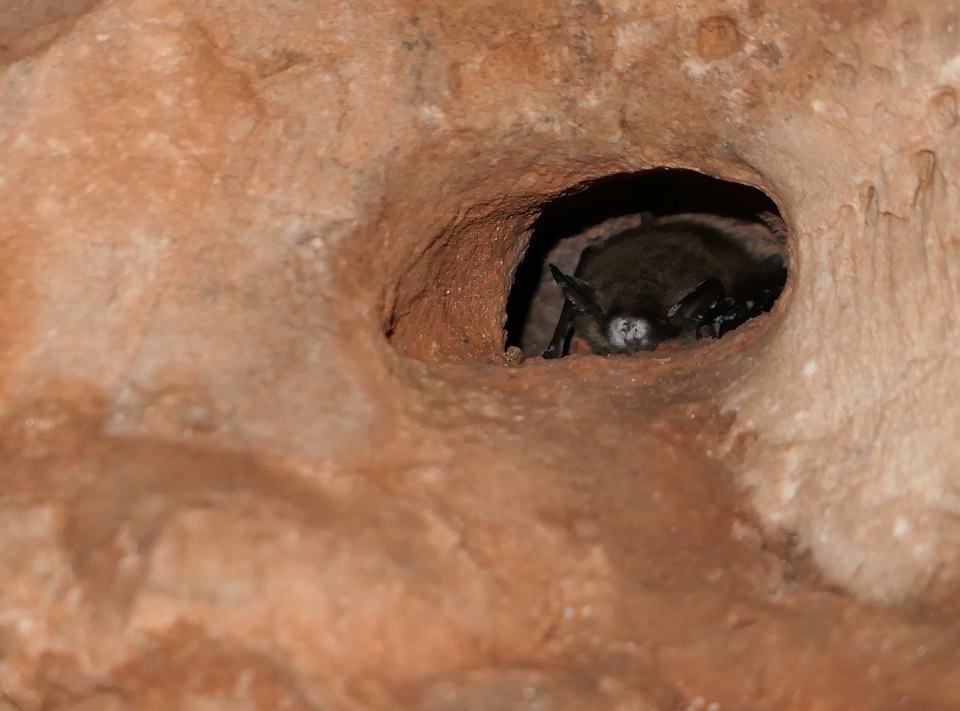News Release
You are viewing ARCHIVED content published online before January 20, 2025.
Please note that this content is NOT UPDATED, and links may not work. For current information,
visit https://www.nps.gov/aboutus/news/index.htm.

NPS Photo
|
Subscribe
|
Contact: Tom Farrell, 605-745-1130
WIND CAVE NATIONAL PARK, S.D. – White-nose syndrome (WNS), a fungal disease that kills hibernating bats, has been confirmed in Wind Cave. Samples recently sent in for testing revealed 2 confirmed cases of the disease and 5 probable.Wind Cave is home to 9 species of bats, including the northern long-eared bat which is one of the species most impacted by WNS. Due to drastic population declines caused by this disease, the northern-long eared bat was listed as threatened under the Endangered Species Act. Caves such as Wind Cave provide important shelter for these unique flying mammals that can eat up to their body weight in insects each day and provide valuable pest control services.
These cases are the first confirmation of WNS in bats in Wind Cave, although it was previously confirmed in bats in Custer County, South Dakota, in 2018. White-nose syndrome is a fatal disease of hibernating bats and has killed millions of North American bats since its emergence in 2006. There is no evidence that WNS poses a health risk to other wildlife, domestic animals or humans.
Wind Cave staff are protecting hibernating bats in the cave by avoiding use of the cave’s Walk-In Entrance during the winter hibernation season. Wind Cave National Park is planning to resume limited cave tours this spring. All cave tour participants will be required to walk across a mat containing hydrogen peroxide to kill any fungus on their shoes that could inadvertently spread WNS to other areas.
Park visitors should avoid contact with bats and notify park rangers of any dead or sick bats they see. The best ways visitors can help protect bats is by staying out of closed caves and following ranger instructions before and after a cave tour. Additionally, individuals can help stop WNS transmission by not re-using gear that has been in WNS-affected areas in places that do not have the disease.
The bats were tested at the U.S. Geological Survey National Wildlife Health Center located in Madison, Wisconsin. Genetic analyses to identify species of the submitted bats are pending.
For more information about WNS, visit go.nps.gov/wns or whitenosesyndrome.org.
Last updated: March 5, 2021
